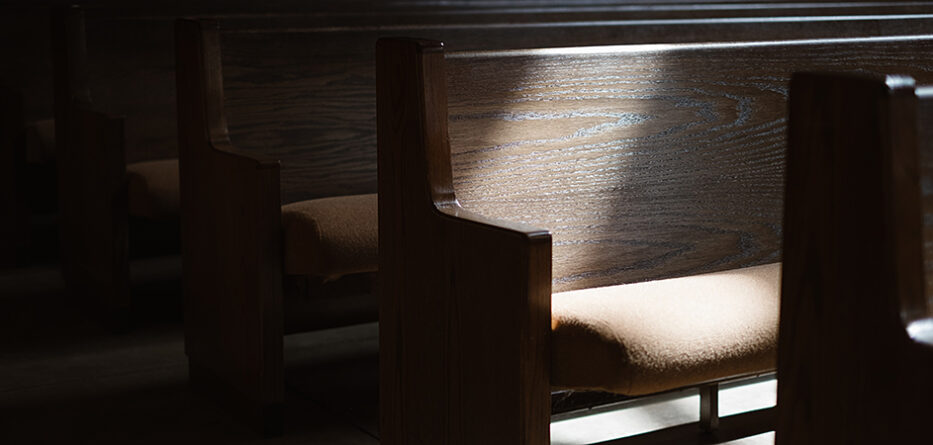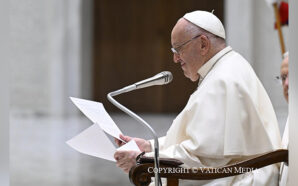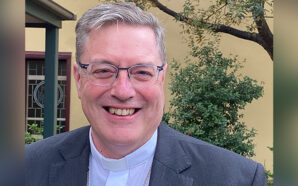In a reflection written toward the end of the great confinement, which the Covid-19 pandemic forced on the entire world, Czech Catholic thinker Tomáš Halík identified the closed and empty churches as a prophetic warning sign about what the Church might become: closed and deserted.[1] It is a warning sign, because it foreshadows what the permanent condition of the Church will be in the near future – in some places in Europe it is already a reality – if the challenges of the emerging new era, that change of times that is underway and to which Pope Francis has referred to as more than just an ordinary time of change, are not taken seriously.
Although rhythms and modalities might vary from place to place in the world, it would seem that it is this underlying tendency, toward a closed and empty condition that awaits the Church if it fails to confront such challenges on both an intellectual and an operational level. If, in other words, it fails to impress a profound transformation not only on ecclesial structures, but also on the existential and spiritual dimension of faith. It is a prophetic warning sign, because the drama constituted by the loss of people, relevance and credibility, as well as the crisis generated by the emptiness of spaces and rituals, practices and concepts, today presents itself as an opportune time to establish important processes of true spiritual conversion and profound ecclesial reform.
The current crisis as a transformational opportunity for the Church
Halík takes up that warning sign and explores its prophetic significance in a more recent work, Pomeriggio del cristianesimo. Il coraggio di cambiare (The Afternoon of Christianity: Courage to change).[2] If viewed as the threshold of a new era for Christianity, the current crisis presents itself as an opportunity for the Church to transform. This is the question he poses: what will be the future of Christianity and what form will the Church of the future take?
For clarity, we understand “form” as “a set, as unified as possible, of beliefs, actions, sensibilities, laws, through which it is possible to live the Gospel authentically,” according to the definition of French Benedictine Ghislain Lafont. This theologian’s analysis suggests that since the Second Vatican Council “we have not yet found the ‘form’ that can enable us to advance more freely and expeditiously.” The form within which we understand ourselves and interact with reality today – call it the “Gregorian,” “Tridentine,” or “Roman” form – is “certainly venerable and […] has borne its fruits,” but it is no longer “suited to the present juncture.” Therefore, rather than updating it, perhaps now is the time to “give birth to a new form.”[3]
Halík bluntly warns that “a real renewal of the Church cannot come from the desks of bishops or from meetings and conferences of experts, but presupposes strong spiritual impulses, deep theological reflection and the courage to experiment” (pp. 83f). However, the fact that the Catholic Church today is globally engaged in the Synod on “Communion, Participation, Mission” – which the pope has decided to extend for another year, until 2024 – somehow manifests this same anxiety for a future form of Church, the desire to live up to the spiritual power of the Gospel and the need connected with the mission to proclaim it in the present time. Halík’s book offers, in our opinion, an important contribution to this cause.
Why is the “afternoon of Christianity” an auspicious time for the “courage to change”? The expression is taken from Carl Gustav Jung (1875-1961), a Swiss psychotherapist, who likens the dynamics of individual human life to the course of a day: the “morning” corresponds to youth and the beginning of adulthood; the “noontime” recalls that period of crisis in which what was previously secure is questioned, and what used to give satisfaction is then no longer enough; and the “afternoon” indicates maturity and old age.
Applying these three stages to the history of Christianity, Halík sees the “morning” as the period from the beginnings to the threshold of modernity, “a long period in which the Church first built up its institutional and doctrinal structures” (p. 48). Then came the crisis of the “noontime,” “which shook those structures” (ibid.). It was a long period, which lasted “from the late Middle Ages through the entire modern age, from the Renaissance and Reformation, the internal division within Western Christianity and the ensuing conflicts, which challenged the credibility of individual denominations, to the Enlightenment, the era of the critique of religions and the spread of atheism, and up to the following phase, which led to a slow overcoming of atheism in favor of apatheism, religious indifference” (ibid.).
The “afternoon” is the stage we are entering, in which the impact of the “noontime” crisis has been overcome and “Christianity seeks in the plural postmodern and postsecular society a new home, new forms of expression” (p. 124). It is also true, as is acknowledged in the last lines of the book, that “afternoon” can suggest “the proximity of evening, the endtime and death” (p. 260), a stage that heralds the end. However, Halík explains, “in the biblical interpretation of time, the new day begins with the evening” (ibid.). Thus it is that, at the end of this long period of crisis, as “the moment when the first star will appear in the evening sky” (ibid.), we can already glimpse traits capable of giving Christianity a new and promising form.
These traits can be discerned, for example, when faith, more mature and more humble, shows itself capable of taking seriously, welcoming and integrating the experience of darkness and emptiness due to the loss of centrality, control and security caused by the crises of the “noontime,” recognizing that this very experience of death is characteristic of the Gospel and testifies to the truth of a spiritual adventure. The traits can also be discerned when recognizing that secularization is not the end of religion or Christian faith, but rather the transformation of meaning that has become more commonplace – eminently social, political and cultural – in the system of narratives, rituals and symbols that express and consolidate a society’s identity, and that what is lost, after all, opens up the possibility of a renewed evangelical authenticity and other ways of understanding the role of religion and the scope of Christian faith.
The traits can still be discerned when Christianity refuses to allow itself to be confused with any identity, ideology or vague esotericism, when it undertakes a continuous reading of the signs of the times, scrutinizing the spiritual scope of the human dimension, its cultural and artistic expressions and the great questions and quests of today’s men and women. The traits are also discernible when Christians become aware that the framework of liberal democracies is no less conducive to its identity and mission than other political systems within which it has supposedly been better off in the past; when it learns to engage in a healthy confrontation with the otherness and plurality of those it addresses, overcoming the unhealthy suspicion of all that is new, without this amounting to yielding to the superficial and uncritical attraction of the fashions of the moment.
The new form of Christianity as a faith option
Halík warns that “the afternoon form of Christianity – like all its earlier forms – was not generated by an impersonal and irreversible logic of historical development” (p. 49). We are not, therefore, faced with a necessity that, whether we like it or not, will still have to be realized. On the contrary, this form presents itself to us as a kairos, “an opportunity that opens up and offers itself at a certain moment, but which is realized only when people freely understand awareness and free determination. In Ignatian language, it is an election, a choice that necessitates consequent actions.
In this “afternoon” in which we find ourselves, there is thus a risk of “growing old badly,” that is, of failing to recognize and grasp the favorable opportunities of our time and its most vital movements. This will be the case if, in an imprudent and superficial way, life as it is existentially and culturally presented is denied or stifled, and if we claim to solve the crisis through simple external changes in “some institutional structures” or “a few paragraphs of the catechism, the code of canon law and moral texts” (p. 9) without involving the spiritual, theological and religious background of the act of faith and Christian practices. In that case, the results would be superficial and confusing.
It would be even more burdensome to entrench oneself behind defensive, hostile attitudes, in the belief that being faithful is tantamount to reproducing the “exemplary” past that preceded the crisis of the “noontime.” A paradigmatic example of such an attitude is the anti-modernist struggle which emerged from the mid-19th century until the mid-20th century. If the Church then became entrenched and lost incisiveness and capacity for dialogue with the philosophical, scientific and artistic culture of the time, today it would run the risk of “generating a poisoned and repugnant form of Christianity” (p. 49).
If what the Church lives and has to offer is not recognized as an existential good that makes sense and is meaningful for the lives of real people and communities, and if it is not capable of creatively inserting itself into the cultural fabric in which people today find themselves, understand themselves and express themselves, it will end up being identified, and in most cases rejected, as an irrelevant devotional practice, a religious ritual or a partisan moral ideal, an identity ideology, aimed at political affirmation or instrumentalization. In this sense, clericalism, fundamentalism, integrationism and triumphalism, which tend to exhibit an outward and superficial self-referentiality, will be forms incapable of sustaining an authentic faith option.
The time of historical changes we are living through offers opportunities for Christianity. Let the Church serenely accept, without denying the cost, that a long era of its history is coming to a close and that, in order to live up to its innermost identity and mission of proclaiming the Gospel of Jesus, it will inevitably have to go through a strenuous new birth. In the words of German Benedictine Elmar Salmann, in the moment of birth, as in so many other significant beginnings, there is always much that dies, just as in the processes of death there is much that is born. After all, this has been the story of Christianity since its beginnings. Receiving an inheritance always involves the burden of giving it a specific aspect, according to the nature of times and places. Gratitude and faithfulness require appropriation, differentiation, translation and risk.[4]
If so, it is necessary to continue to make, in the wake of Vatican II, the serene, patient and courageous journey of identifying what must be preserved and what must be abandoned, what the Church must dedicate itself to as essential and what, as superfluous, it can and must sacrifice. The exercise requires time and care, to the extent that, as theologian Pierangelo Sequeri warns, getting it wrong in matters of consecration and sacrifice would have tragic consequences, because the heart is lost or saved in what it recognizes as its treasure.[5]
The pain of death will be matched by the birth of another form and style of Church. It is not another Church, but another form of Church. The Church has not always been “Gregorian,” “Tridentine,” or “Roman.” It is about another form that, in many ways, we can only presage and glimpse at this time. We know that certain forms of the past – the Church of State and power, the juridical Church, the sacred Church, the bourgeois Church – are dying, and we still do not see clearly what other form the Church should and could take in the present for it to have a future.
Four characteristics of the new Church form
Halík goes on to propose four traits of a new form of Church and Christianity endowed with a future. First, the Church must be understood as the people of God in history, thus in movement, in process. As Pope Francis states in Fratelli Tutti, no. 160, “A living and dynamic people, a people with a future, is one constantly open to a new synthesis through its ability to welcome differences. In this way, it does not deny its proper identity, but is open to being mobilized, challenged, broadened and enriched by others, and thus to further growth and development.”
Second, the Church must be a school of life and wisdom, in the light of the original idea of medieval universities, “which arose as communities of teachers and alumni,” communities “of life, prayer and teaching” (p. 232), capable of sustaining a thoughtful and mature faith at the intellectual and moral level, but also at the therapeutic level, as a bulwark against intolerance, fundamentalism and fanaticism.
Third, the Church must realize itself as a field hospital, fulfilling the propensity and willingness to be found “with courage and selflessness […] in places where people are wounded physically, socially, psychologically and spiritually, and trying to treat and heal those wounds” (p. 233). This presence implies the ability to make good diagnoses, excellence in the “art of reading and interpreting the signs of the times,” in the “theological hermeneutics of the facts of society and culture,” with particular attention to “epochs of crisis and changing cultural paradigms” (ibid.).
Fourth, the Church must be a place of encounter and dialogue. For this, “it must once again become a society of the Way, developing the pilgrim character of faith” and building living spiritual centers “from which to draw courage and inspiration for new journeys” (p. 239).
When the Church realizes that Christianity is experiencing the end of an epoch and that the risks of shipwreck are real, if only because of existential and cultural irrelevance, “ghettoization” or new and painful internal fractures, to commit to interpreting the epochal changes and to pose, as Halík does, the question of the form it might take in the future is an act of ecclesial responsibility. It is a form capable of realizing an existentially adult and spiritually meaningful faith, in living and qualified contact with the most basic fibers of life, with Scripture, Tradition and the spiritual signs of the times.
A form marked by humility and shaped by the gaze that comes from what is marginal, from what is most peripheral, from what is precarious; a form determined in its commitment to that which safeguards and elevates life, especially of the weakest, and also creation. A form that in ritual practices, theological thinking and institutional structures takes into account dynamic categories and processes. All these elements will be able to characterize the new ecclesial form.
José Frazão Correia is editor of the Portugese Jesuit Brotéria Magazine.
Reproduced with permission from La Civiltà Cattolica.
[1]. T. Halík, Il segno delle chiese vuote. Per una ripartenza del cristianesimo, Milan, Vita e Pensiero, Kindle edition, 2020. An English version is available at http://halik.cz/en/tvorba/clanky-eseje/clanek/642/
[2]. Id., Pomeriggio del cristianesimo. Il coraggio di cambiare, Milan, Vita e Pensiero, Kindle edition, 2022. In the text the page numbers of this volume, from which the quotations are taken, are given in parentheses.
[3]. G. Lafont, “Prefazione”, in S. Morra, Dio non si stanca. La misericordia come forma ecclesiale, Bologna, EDB, 2015. Theologian Stella Morra considers “ecclesial form” through the perspective of mercy.
[4]. Cf. E. Salmann, “Fim de uma época da Igreja”, October 6, 2022 (www.ihu.unisinos.br/categorias/622783-fim-de-uma-epoca-da-igreja-artigo-de-elmar-salmann).
[5]. Cf. P. Sequeri – E. Salmann – C. Theobald, “La teologia non ha futuro senza immaginazione”, in Vita e Pensiero 108 (2021/4) 76f.








